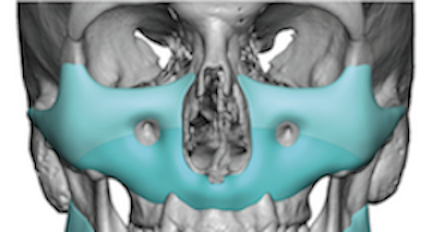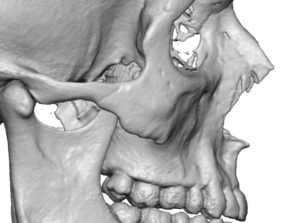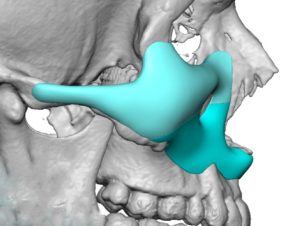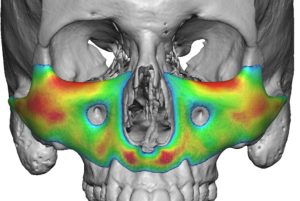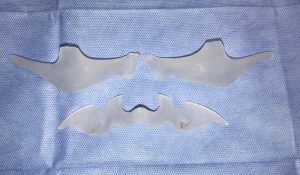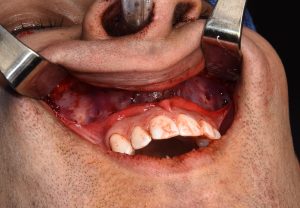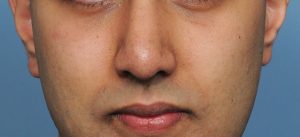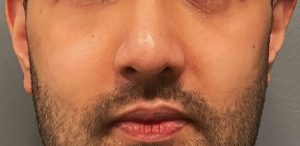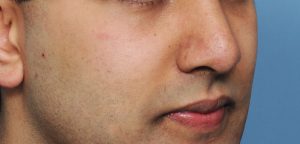Background: There are only two effective surgical methods for creating a complete midface augmentation effect. The most well known are the variety of LeFort osteotomies. They work by moving whatever amount of bone that remains attached to the dentoalveolar complex based on the location of the osteotomy line. In a Lefort III the osteotomy line crosses the infraorbital rim and includes part of the cheek bone. Its effects can be limited as amount of midface augmentation depends on where the attached teeth can be moved. While this is a good operation for more severe midface retrusions and those associated with malocclusions, its use has substantial limitations in the aesthetic midface deficient patient.
In the custom midface implant the dentoalveolar arches are left intact. The bone above the arches can be augmented over any part of the midface and by almost any amount desired using an onlay augmentation approach. It is more versatile than a LeFort osteotomy as the implant design can have any thicknesses throughout its large surface area of coverage. While most custom midface implants can be placed completely through an intraoral approach, the higher the level of the infraorbital-malar coverage the more likely a lower eyelid incision may be needed as well.
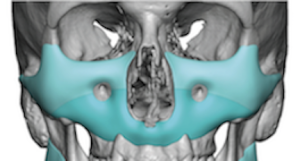
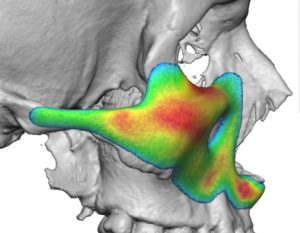
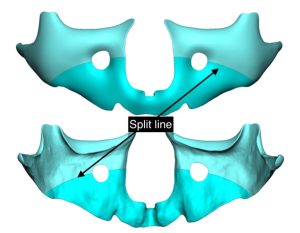
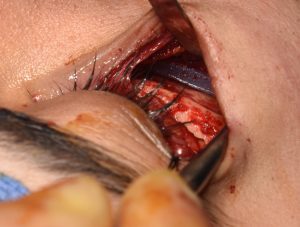
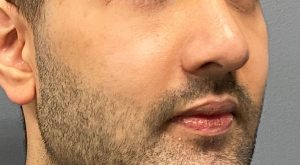
Of all the custom facial implants the more complete midface styles are the least well known…and probably underutilized.
Case Highlights:
1) When the occlusion is acceptable the entire midface can be brought forward/augmented with a custom midface implant.
2) A extended custom midface implant is similar to a LeFort III osteotomy with the exception of a smoother effect across the infraorbital rims out across the zygomatic arches.
3) In the extended custom midface implant a split design is used with a resultant three piece implant placed through three separate incisions.
Dr. Barry Eppley
Indianapolis, Indiana

